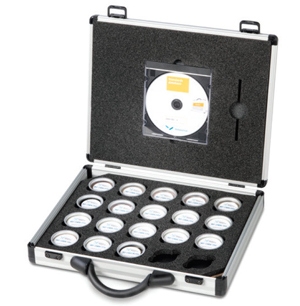This application note demonstrates the ability and flexibility of Omnian at analyzing solids, powders and liquids, using the default settings. In combination with an Epsilon 4 EDXRF spectrometer, Omnian can quickly screen major, minor and trace elements within 3 minutes.
The combination of excellent detector resolution, high sensitivity and powerful software deconvolution models contribute to the accuracy and speed of the results.
Omnian, developed for Malvern Panalytical’s high-end XRF spectrometers, is also available for the Epsilon 4 EDXRF benchtop systems. This powerful combination brings together the strengths of Omnian with the ease of use of Epsilon 4. Omnian is designed to provide fast, reliable quantification in the default ‘black box‘ mode. However, the data collected is comprehensive and can be reviewed in further detail if required.
This application note demonstrates the capability of Omnian for the analysis of a variety of industry-related samples, such as cement, metals, oils and geological samples, using default settings in only 3 minutes per sample. Omnian’s advanced Fundamental Parameters (FP) algorithm automatically deals with the analytical challenges posed by samples of widely different compositions from a variety of sources.
Omnian’s friendly user interface offers scaleable solutions for routine to advanced usage. Minimal steps are required for operation: enter the sample ID, enter preparation details if required and press the ‘measure’ button.
A cement standard (NIST 1885a) was prepared as a fused bead and measured with the default Omnian settings, selecting loss on ignition (LOI) as the balance. The measured concentrations are compared with the certified concentrations in Table 1 and show a good correlation.
Table 1. Omnian results compared to certified values of a cement standard, prepared as fused bead. (*) indicates a reference value only.
A low alloy steel standard (BAS SS404/1) was analyzed to illustrate Omnian’s performance when analyzing metals (see Table 2). The only sample preparation that was used was cleaning the surface with fine sandpaper.
Table 2. Omnian results compared to certified values of a low alloy steel standard
Comparison of the measured and certified concentrations show that Omnian can reliably analyze major and minor elementals in metals. Even better results can be expected when using the advanced features within the software.
A lubricating oil standard from VHG-Labs Inc. (Lube Oil 16) was chosen to show Omnian’s fuel, oil and petrochemical analysis capabilities. Five milliliters were put into a disposable liquid cup for analysis. CH2 was calculated automatically as a balance compound by the Omnian software (see Table 3).
Table 3. Omnian results compared to certified values of lubricating oil standard from VHG Inc
The results in Table 3 demonstrate excellent agreement between certified and measured values for minor to trace concentrations in a liquid sample.
A stream sediment standard (GSD11) was analyzed to represent Omnian’s geological analysis capabilities. The standard was prepared as a pressed powder pellet with 10 grams of sample and 2 grams of wax binder.
The results in Table 4 demonstrate the power of Omnian at determining the concentrations of major, minor and even trace elements in geological types of sample.

Figure 1: Omnian samples

Table 4. Omnian results compared to certified values of a stream sediment standard, prepared as a pressed powder sample
This application note demonstrates the ability and flexibility of Omnian at analyzing solids, powders and liquids, using the default settings.
In combination with an Epsilon 4 EDXRF spectrometer, Omnian can quickly screen major, minor and trace elements within 3 minutes. The combination of excellent detector resolution, high sensitivity and powerful software deconvolution models contribute to the accuracy and speed of the results.